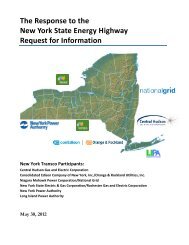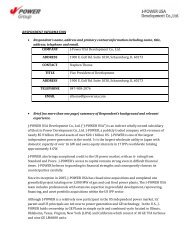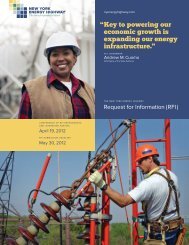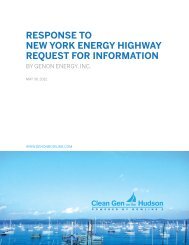Applied Materials - Energy Highway
Applied Materials - Energy Highway
Applied Materials - Energy Highway
You also want an ePaper? Increase the reach of your titles
YUMPU automatically turns print PDFs into web optimized ePapers that Google loves.
[NEXT 3 HEADINGS AND FIGURE ARE PARTIALLY EXCERPTED FROM<br />
THE DOE FCL FACT SHEET]<br />
What are FCLs?<br />
A fault is an unintentional short circuit, or partial short-circuit, in an electric<br />
circuit. A variety of factors such as lightning, downed power lines, or<br />
crossed power lines cause faults. During a fault, excessive current—called<br />
fault current—flows through the electrical system often resulting in a failure<br />
of one section of that system by causing a tripped circuit breaker or a blown<br />
fuse. A fault current limiter (FCL) limits the amount of current flowing<br />
through the system and allows for the continual, uninterrupted operation of<br />
the electrical system, similar to the way surge protectors limit damaging<br />
currents to house-hold devices.<br />
Why Do We Need FCLs<br />
The need for FCLs is driven by rising system fault current levels as energy<br />
demand increases and more distributed generation and clean energy<br />
sources, such as wind and solar are added to an already overburdened<br />
system. Currently, explosive fault-limiting fuses are utilized to limit fault<br />
current, but they require a service call to replace the fuse after it blows and<br />
they are only available for voltages below 35 kV. Series reactors are also<br />
used but they have constant high reactive losses, are bulky, and contribute<br />
to grid voltage drops. FCLs overcome these weaknesses. Additionally,<br />
rising fault current levels increase the need for larger and often costly high<br />
impedance transformers. However, in contrast to these transformers, FCLs<br />
operate with little to no impedance during normal operation which allows for<br />
a more stable system.<br />
3














